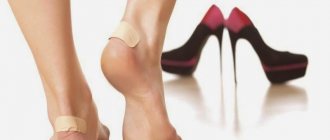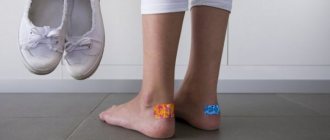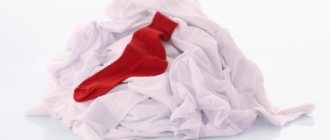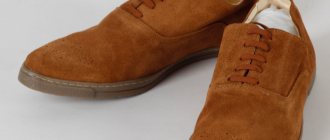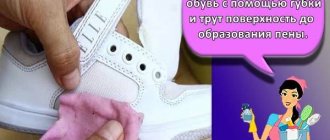Having bought a great pair of shoes, you can end up in an unpleasant situation later, because everything was perfect and comfortable on your feet when you bought it. During the process of starting to use it, the situation changed dramatically - the boots were rubbing. The phenomenon is common because the material of the shoes is hard and takes some time to mold to the shape of the foot. What to do if your shoes rub on the back? The problem is fixable, but it requires additional measures to break in, or you will have to refuse the purchase.
Causes of discomfort
In addition to joy, new shoes can bring an unpleasant surprise. While the material adapts to the shape of the foot, the heel will suffer, especially if the heel of the shoe, due to its rigidity, cannot bend sufficiently during the pressing process. This happens 90 percent of the time. There are other reasons for pain:
- Wrong size. Even a slight deviation in one direction or another will cause damage to the skin on the legs.
- Not suitable model. Volume and completeness are essential parameters when choosing. The use of different pads during production makes the products unequal in lifting. The result is calluses if you don’t approach the fitting responsibly and without haste.
- Legs are prone to swelling. These individual features should not be missed when purchasing. To prevent shoes from chafing due to the length of walking, look for wider lasts.
How to break in shoes?
Breaking in shoes is not an easy task and requires a lot of time and patience. Don’t think that you can put on a tight pair in the morning, walk all day, and take off your comfortable soft shoes in the evening. Such an experiment will most likely end in bloody feet and a shelved purchase.
You need to break in your shoes gradually, 1–2 hours over several days. After walking around a bit, you need to examine your feet and find areas of redness. This is where the callus is expected to appear. Next time, when putting on a problem pair, you need to seal these places with adhesive tape in advance.
It is not recommended to wear tight shoes on bare feet, especially if this happens for the first time. A nylon golf or sock allows for fewer abrasions. After a few wear-in sessions, you can ditch the socks.
During wear-in, it is advisable to use special preparations or folk remedies described above. This will speed up the process and eliminate unnecessary inconvenience. Well, if the shoes still do not want to adapt to their owner, you need to contact a shoe workshop for the help of professionals.
We choose wisely
Responsibility and balance are the main criteria for approaching selection and fitting, so as not to look for an answer to the question “Shoes rub your heels, what should I do?” Most of the purchased models are intended for frequent use. Comfort is the main point in the choice, after which we pay attention to beauty and other features. If boots rub your heel, then no matter how beautiful they are, they turn into an instrument of torture. Advice for a specific case is complex, but there are general recommendations that you need to heed so as not to torment your feet with shoes:
- Walk around in the product you like right in the store, this will allow you to feel it.
- Even if you really like the model, but the size is a little larger, don’t buy it - the backs will bother you.
- Look for an orthopedic last - one of the defining moments.
- Natural material is preferable.
- Time for shopping is also important. It is necessary to measure in the evening, by this time the leg becomes a little larger.
- Avoid hard soles, opting for soft and flexible bases.
It is not always possible to wear shoes. The reason may be the peculiarity of the material from which it is made, as well as natural factors - a slight increase in the size of the leg in the afternoon. Soft natural materials may stretch a little when trying them on, but the size is still not yours, you need to take this into account.
What do you do with your shoes if the heel rubs?
Is it possible to return (change, return) shoes?
You can return purchased shoes to the store if:
- less than 14 days have passed;
- they didn't wear shoes;
- you saved the receipt;
- you discovered a defect.
In the latter case, you may be asked to conduct an independent examination. You must pay for it yourself. If the defect is confirmed, the shoe company will compensate for losses and return money for the goods.
It must be remembered that a rubbed callus is not an objective reason for returning the product to the store.
It’s better to carefully choose shoes before purchasing than to worry about what to do with uncomfortable shoes later.
Stretch and wear out
While enjoying a new thing, you shouldn’t put it on and expect to show off in it all day. There will be some discomfort for some time until the material “gets used” to the shape of the foot. If the shoes rub anywhere, we try to stretch them. To do this, we turn to chemical (you can buy them in shoe stores) or mechanical means. But no one can do the fitting better than a shoemaker. He is the one you should contact if possible.
Natural material
If your shoes chafe, you can use several methods. One of them is mechanical in nature. If the backdrop rubs, you need to wrap it well in soft material and tap it with a small hammer, being careful not to spoil the material. You can use pliers instead of a hammer. The option is completely unsuitable for varnish coating.
Regular table vinegar, which is a caustic liquid with the ability to make the material more elastic, will help make your shoes soft. It is necessary to moisten a piece of cloth in it, squeeze it out so that the liquid does not drain, and put it inside the shoes, keeping it there for 12 hours. A more gentle option is a damp cloth. But here you need to use glycerin, lubricating the problematic parts of the model with it. This must be done by waiting a quarter of an hour from the moment a hot, damp piece of cloth is placed inside, allowing the material of the product to warm up sufficiently. Glycerin can be replaced with castor oil. Paraffin, natural wax and soap are also suitable in this status.
How to sell a new model faster? Shoes that rub are pre-treated. To do this, use vodka, which is used to rub the sides and back from the inside. Then we put on socks, put on our shoes and walk indoors until the pair is completely dry. One of the simple ways to prevent new shoes from rubbing your feet. The pair must be the right size.
Important! Shoe stores sell aerosol products for such purposes that are harmless to leather shoes.
Artificial material
Leatherettes and other synthetics require a different approach. If shoes made from such materials rub, vinegar, as in the previous example, should be replaced with alcohol. You should carefully study the composition of the products used. The presence of acid will render your new purchase unusable. If your shoes rub your heel, use a water-alcohol solution prepared in advance. Soak your fingers in it and knead the product in the heel area. Do not apply excessive force and do not use this technique; if the design contains cardboard elements, they will lose their original shape.
All vegetable oils are suitable for use from the inside - rub and leave to soak for 12 hours, followed by wiping off any remaining residue with a napkin. Oil can be replaced with glycerin, it is absorbed faster, after which it will be easier to break in the shoes.
Purchased synthetic shoes rub the skin on the heel. The method involving the use of a damp hot cloth, a hammer or pliers also works, but the risk of damage remains.
Return
If you have no idea how to break in a purchased pair of shoes (or this is not possible), use the return-to-store option. The legislation regulates such a procedure, so there is nothing terrible here if you adhere to certain rules, using your consumer rights:
- a product purchased for a maximum of 14 days before the buyer decided to return it to the seller is subject to return;
- mandatory preservation of the packaging in its original condition and availability of a receipt;
- shoes must be returned in their original condition.
If there are significant defects, the goods may not be accepted legally. If the buyer does not comply with the stipulated standard conditions, the return may also not take place. If the buyer feels that he is right, then he has the opportunity to express his claims in writing to the store owner with a copy sent to the manufacturers or for use in legal proceedings.
If the decision is positive, the buyer will be offered options to get out of the situation: return the entire amount or replace it with a new pair, or with another model with an additional payment, or vice versa, return the difference if the purchase is less expensive.
Main life hack
The main success factor when stretching/expanding shoes at home in length/width is the use of special tools, especially if they are suede. Stores offer creams, gels, sprays, impregnations - their own set for each type. The easiest way is to show the problem pair to a consultant in a specialized department of the store, asking for help in selecting the composition for treatment.
Dealing with the consequences
My shoes rub my heels, what should I do? There are two sides to the problem. In parallel with breaking in, you need to worry about the legs, which have already suffered. It is not always possible to protect yourself from the appearance of calluses in a timely manner. If it has already appeared, then first of all we change the pair to a familiar and comfortable one. And we use it until the wound heals.
Wet blisters
The so-called dropsy is very painful, so the bactericidal patch should protect the neoplasm from exposure. Do not try to pierce it, to avoid the risk of infection. To speed up regeneration processes, use freshly cut aloe or plantain to prepare a compress.
The healing of dropsy is a long process and requires special actions:
- Iodine, brilliant green, peroxide are used for disinfection in the wound area.
- We prepare a bath and disinfect the sewing needle in it for 5 minutes.
- We heat the bubble on several sides to drain the exudate. Punctures are made parallel to the skin.
- There is no need to tear off the skin of the bladder; it will act as protection for the wound during the healing process.
- Apply antibacterial ointment and cover with a bactericidal plaster.
Correctly carried out actions minimize the risk of infection of the wound surface. In the future, the bandage must be changed every 5 hours.
Dry corns
The skin's response to constant pressure is its hardening. Dry calluses appear in such places. They get rid of them with baths and compresses using potassium permanganate and chamomile decoction. The temperature of the prepared solution should be within 40 degrees.
How to prevent calluses
New shoes rub your skin - how to get rid of this problem? Only ideally selected shoes and their correct placement can serve as a guarantee. The correct size and comfortable last is reinforced by gluing a bactericidal patch to critical areas of the foot.
If the callus has already appeared
If you have already rubbed your foot, then the callus that appears needs to be treated. Let's begin with that:
- Contrast baths will help numb the pain. Baths using herbs, for example: chamomile, calendula, nettle, are also effective. These herbs have antiseptic and anti-inflammatory effects.
- Rub the blister, then after the bath, lubricate it with antibiotic ointment. Use a cream that contains zinc - it dries and soothes the skin. After treating the damaged area, cover it with a bandage.
Now you know what to do if your new shoes chafe, and how to avoid blisters. Remember our recommendations and wear shoes without damage.
What helps with chafing between your legs?
We listened to what experienced athletes advise beginners and compiled a rating of recommended products for you.
- Petrolatum
- Balm from Body Glide.
- Ointment "Polar" from Repharm.
- Cream "BOROPLUS"
- "Anti- chafing
" from Aptonia.
Interesting materials:
What is Kali Linux? What is flagstone? What is chamber vocal music? What is canon and non-canon? What is a character's canon? What is a canon in ancient Egyptian art? What is canonization of a righteous person? What is Kant in music grade 3? What is birch burl? What is a dental guard?
Other stretching agents
Vinegar
Rub the inside of the sneakers with 3% table vinegar. An excellent option for softening the material . Be sure to dry and ventilate after the procedure to remove the specific odor.
Castor oil/ Drying oil
Using a cloth or cotton swab, apply the product to the underside of the sole. It softens the skin well and creates a wonderful barrier against street moisture.
Cologne
If they cause discomfort, moisturize the heel and toe areas from the inside out. And then rub these places well with 72% laundry soap.
Kerosene
Carefully process the inside of the product. Stuff it tightly with rags or put it on your feet and walk for 30 minutes. After the procedure, be sure to place the sneakers on the balcony for air.
Glass cleaning liquid
The technique is the same as when using kerosene. The thicker the socks you wear, the more the shoes wear out.


